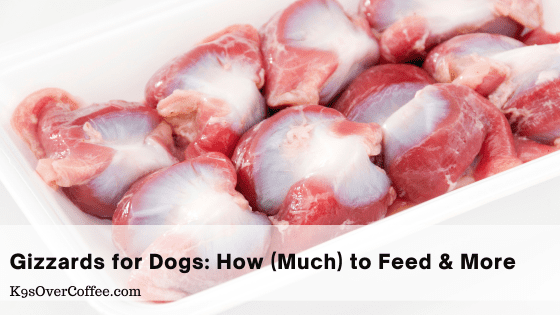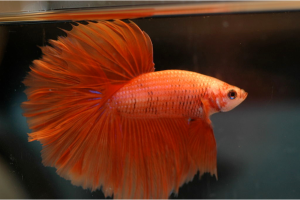Contents
- Feeding Chicken Gizzards to Dogs: Is It Safe Everyday?
- Understanding the Nutritional Value of Chicken Gizzards
- Benefits of Including Chicken Gizzards in a Dog’s Diet
- Potential Risks and Drawbacks of Feeding Chicken Gizzards
- Feeding Chicken Gizzards in Moderation
- Vitamins and Minerals Found in Chicken Gizzards
- Determining the Ideal Amount of Chicken Gizzards for Dogs
- Preparing and Serving Chicken Gizzards to Dogs
- Variety and Balance in a Dog’s Diet
- Consulting with a Veterinarian
- Alternative Protein Sources for Dogs
Curious about whether you can feed your furry friend chicken gizzards regularly? Look no further! In this article, we explore the safety of feeding chicken gizzards to dogs on a daily basis. Discover the potential benefits, risks, and expert insights to make an informed decision about incorporating this protein-packed treat into your pet’s diet.
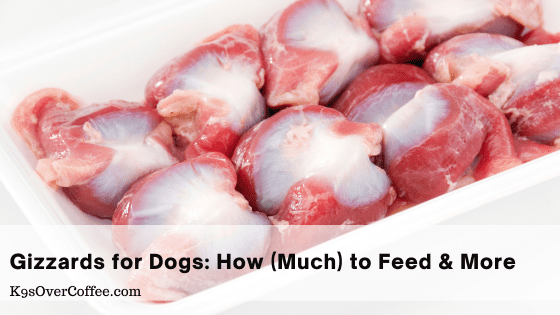
Feeding Chicken Gizzards to Dogs: Is It Safe Everyday?
If you’re considering incorporating chicken gizzards into your dog’s diet, it’s important to understand the nutritional value of these innards and the potential benefits and risks associated with feeding them to your furry friend. In this article, we will explore the various aspects of feeding chicken gizzards to dogs, including their nutritional composition, benefits, risks, and how to incorporate them into a balanced diet. Remember to always consult with a veterinarian before making any significant changes to your dog’s diet.
Understanding the Nutritional Value of Chicken Gizzards
The Composition of Chicken Gizzards
Chicken gizzards are rich in protein and essential nutrients, making them a valuable addition to a dog’s diet. Composed mostly of muscle and connective tissue, gizzards are a highly digestible organ meat. They are also low in fat, making them an excellent choice for dogs who need to maintain a healthy weight or have specific dietary restrictions.
Protein Content in Chicken Gizzards
Protein is a vital macronutrient for dogs, as it plays a crucial role in growth, repair, and maintenance of tissues. Chicken gizzards are an excellent source of animal-based protein, containing all the essential amino acids that dogs need for optimal health. Including gizzards in your dog’s diet can contribute to their overall protein intake, promoting muscle development and supporting a healthy immune system.
Essential Nutrients Found in Chicken Gizzards
Chicken gizzards are packed with essential vitamins and minerals that contribute to your dog’s well-being. They are particularly high in vitamin B12, iron, zinc, selenium, and phosphorus. Vitamin B12 is essential for the production of red blood cells, while iron plays a vital role in oxygen transport throughout the body. Zinc is important for immune function and wound healing, while selenium supports thyroid function and acts as an antioxidant. Phosphorus is crucial for the development and maintenance of healthy bones and teeth.
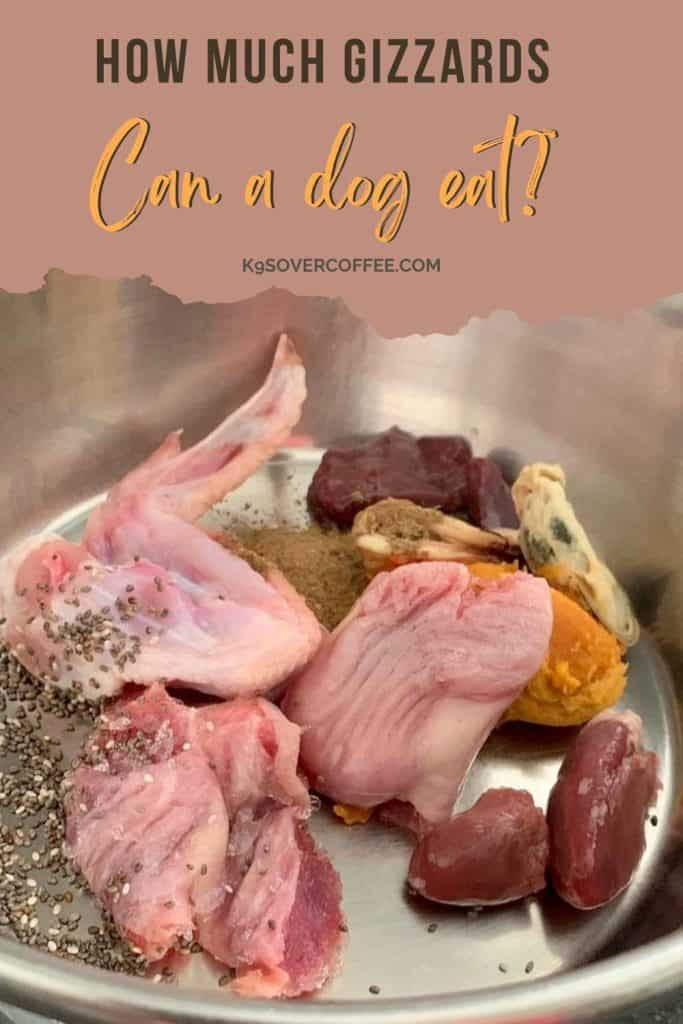
Benefits of Including Chicken Gizzards in a Dog’s Diet
High Protein Content for Growth and Maintenance
As mentioned earlier, chicken gizzards are abundant in protein. This high protein content makes them an excellent choice for dogs at various stages of life, including puppies who require protein for growth and adult dogs who need to maintain muscle mass.
Source of Essential Amino Acids
Chicken gizzards provide dogs with a complete source of essential amino acids. Amino acids are the building blocks of proteins, and dogs cannot synthesize them on their own. Including gizzards in your dog’s diet ensures they receive a well-rounded amino acid profile, which is essential for various physiological functions.
Rich in Vitamins and Minerals
The abundance of vitamins and minerals found in chicken gizzards makes them a valuable addition to your dog’s diet. These nutrients contribute to overall health, support immune function, and aid in the proper functioning of various physiological processes.
Promotes Healthy Skin and Coat
The inclusion of chicken gizzards in your dog’s diet can contribute to a shiny and healthy coat. The presence of vitamins and minerals, such as zinc and selenium, helps support skin health, reduce inflammation, and improve coat condition.
Supports Muscle Development
Due to their high protein content, chicken gizzards play a vital role in supporting muscle development and maintenance. Protein is necessary for repairing and building muscle tissues, which is especially important for active dogs or those involved in sports or agility activities.
Aids in Digestive Health
The high protein content in chicken gizzards can contribute to a healthy digestive system in dogs. Protein is essential for the production of enzymes involved in digestion, ensuring proper nutrient absorption and efficient gastrointestinal function.
Potential Risks and Drawbacks of Feeding Chicken Gizzards
While there are many potential benefits to feeding chicken gizzards to dogs, it’s essential to be aware of the potential risks and drawbacks associated with their consumption.
Potential for Allergic Reactions
Just like any other food, some dogs may have allergies or sensitivities to chicken gizzards. If your dog has a known allergy to poultry or exhibits symptoms such as itching, gastrointestinal upset, or respiratory issues after consuming chicken, it’s best to avoid feeding them gizzards altogether.
Imbalance in Calcium and Phosphorus
Chicken gizzards are higher in phosphorus than calcium, which can lead to an imbalance in the dog’s diet if not properly accounted for. A high phosphorus-to-calcium ratio can affect bone health and contribute to conditions such as skeletal abnormalities or urinary stone formation. It’s crucial to balance the overall calcium-to-phosphorus ratio in your dog’s diet and consult with a veterinarian for guidance.
Risk of Gastrointestinal Upset
Introducing any new food into your dog’s diet carries the risk of gastrointestinal upset. Chicken gizzards, albeit highly digestible, can be rich in protein and fat, which could cause loose stools or an upset stomach, especially if fed in excess or to a dog with a sensitive digestive system. Slowly introducing gizzards in small amounts and monitoring your dog’s reaction can help prevent any digestive issues.
Choking Hazard
Chicken gizzards can be quite firm and dense, posing a potential choking hazard, especially if fed whole or in large chunks. When adding gizzards to your dog’s meals, it’s crucial to chop them into smaller, more manageable pieces to ensure safe consumption.
Potential for Bacterial Contamination
Like any raw meat product, chicken gizzards carry the risk of bacterial contamination, such as salmonella or E. coli. It’s essential to handle and store them properly, following food safety guidelines, and consider cooking them thoroughly before serving to minimize the risk of bacterial infections.
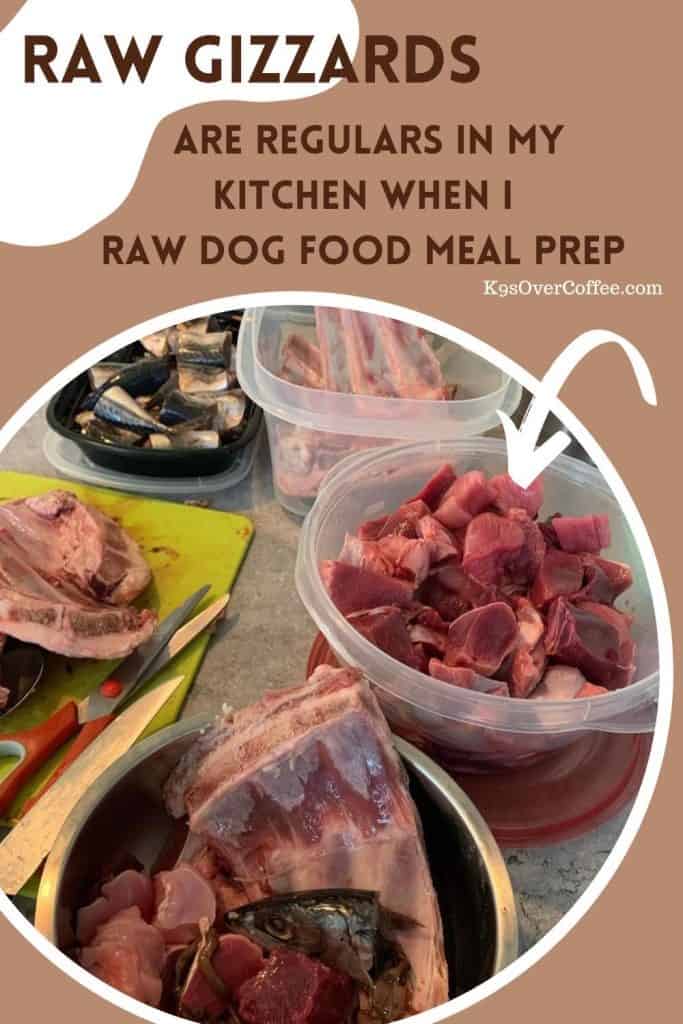
Feeding Chicken Gizzards in Moderation
Balancing Chicken Gizzards with Other Foods
While chicken gizzards provide numerous nutritional benefits, it’s important to remember that they should be part of a balanced diet. Including a variety of other protein sources, such as chicken hearts, chicken liver, turkey gizzards, beef tripe, or lamb kidney, can help ensure your dog receives a well-rounded nutrient profile.
Avoiding Overfeeding
While it may be tempting to include chicken gizzards in your dog’s meals daily, it’s crucial to feed them in moderation. Overfeeding can lead to an imbalance in the overall nutrient intake, cause weight gain, or even lead to nutrient toxicity. Consulting with a veterinarian can help determine the appropriate portion sizes based on your dog’s individual needs.
Monitoring for Digestive Issues
When introducing chicken gizzards into your dog’s diet, it’s important to monitor their digestion closely. Any signs of gastrointestinal upset, such as diarrhea, vomiting, or decreased appetite, should be taken into account. If digestive issues persist or worsen, it may be necessary to adjust the portion sizes or consider alternative protein sources.
Observing for Allergic Reactions
As previously mentioned, some dogs may have allergies or sensitivities to chicken gizzards. If you notice any signs of an allergic reaction, such as itching, excessive licking, redness, or swelling, it’s best to discontinue feeding gizzards and consult with a veterinarian for alternative protein sources.
Vitamins and Minerals Found in Chicken Gizzards
Vitamin B12
Chicken gizzards are an excellent source of vitamin B12, which is essential for the production of red blood cells, proper nervous system function, and overall energy metabolism. Vitamin B12 deficiency can lead to anemia and nervous system disorders.
Iron
Iron is necessary for the transport of oxygen throughout the body and the production of healthy red blood cells. Chicken gizzards provide a good amount of iron, aiding in the prevention of iron-deficiency anemia.
Zinc
Zinc is involved in numerous enzymatic reactions and is essential for immune function, wound healing, and healthy skin. Including chicken gizzards in your dog’s diet can help ensure an adequate intake of this essential mineral.
Selenium
Selenium acts as a powerful antioxidant, protecting cells from oxidative damage. It also plays a crucial role in thyroid function and immune system support. Chicken gizzards are a good source of selenium, contributing to overall health and well-being.
Phosphorus
Phosphorus is essential for the development and maintenance of healthy bones and teeth. Chicken gizzards contain a good amount of phosphorus, which helps support skeletal health and proper cellular function.
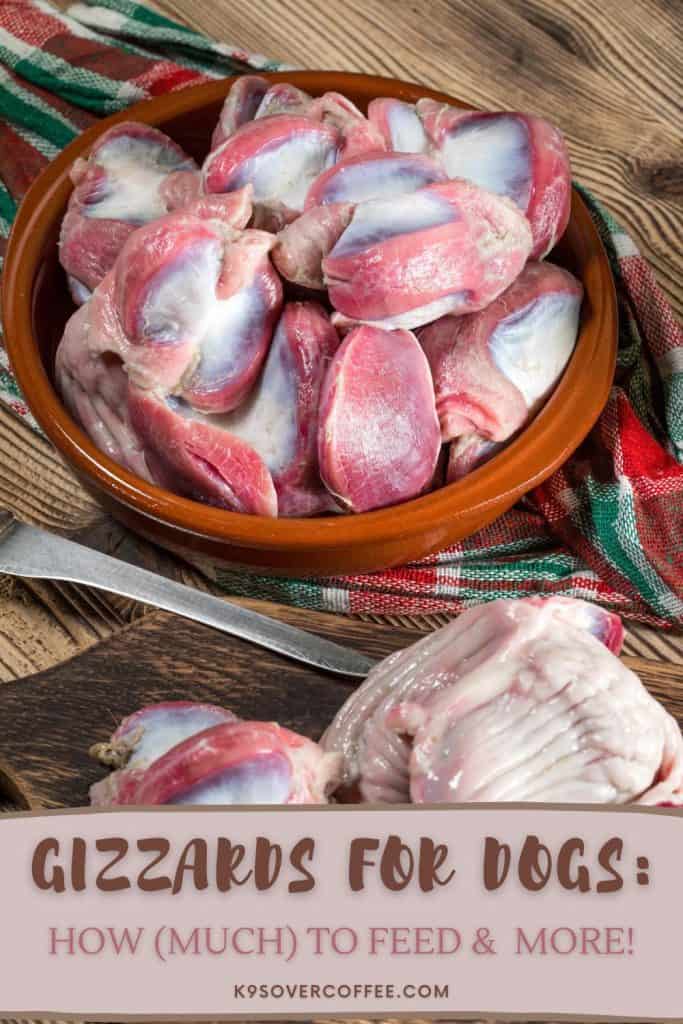
Determining the Ideal Amount of Chicken Gizzards for Dogs
Considering the Dog’s Size and Weight
When determining how much chicken gizzards to feed your dog, it’s important to consider their size and weight. Larger dogs will typically require more food than smaller dogs. As a general guideline, you can feed about 1-2% of your dog’s body weight in chicken gizzards. However, it’s essential to consult with a veterinarian to determine the appropriate portion sizes based on your specific dog’s needs.
Consulting a Veterinarian
Every dog is unique, and their dietary requirements may vary. It’s always wise to consult with a veterinarian before incorporating new foods into your dog’s diet, including chicken gizzards. A veterinarian can evaluate your dog’s overall health, consider any existing medical conditions, and provide personalized recommendations to ensure optimal nutrition.
Adjusting Portion Sizes Based on Other Foods
If you are feeding your dog a balanced commercial diet or providing other protein sources, it’s essential to consider the overall nutrient intake. Adjust the portion sizes of chicken gizzards accordingly to maintain a balanced and nutritious diet for your dog.
Preparing and Serving Chicken Gizzards to Dogs
Cooking Methods for Chicken Gizzards
While some dog owners choose to feed raw chicken gizzards, it’s important to note the potential risk of bacterial contamination associated with raw meat. Cooking the gizzards is a safer option to minimize this risk. You can boil, steam, or bake the gizzards until fully cooked. Be sure not to add any seasonings or additives that may be harmful to dogs, such as salt, garlic, or onions.
Avoiding Seasonings and Additives
It’s important to serve chicken gizzards in their natural form, without adding any seasonings or additives. Dogs have different sensitivities to certain ingredients, and some seasonings commonly used in human cooking can be toxic to dogs. Keep it simple and stick to plain cooked gizzards when preparing them for your furry friend.
Serving Sizes for Chicken Gizzards
The serving size of chicken gizzards will depend on your dog’s size, weight, and overall dietary needs. As previously mentioned, a general guideline is to feed approximately 1-2% of your dog’s body weight in gizzards. However, always consult with your veterinarian to determine the optimal serving size for your specific dog.
Mixing with Other Ingredients for a Balanced Meal
To ensure a well-rounded and nutritionally balanced meal, consider mixing chicken gizzards with other ingredients. You can incorporate vegetables, fruits, grains, or other protein sources to create a complete and balanced meal for your dog. Be sure to consult with a veterinarian or canine nutritionist to ensure the appropriate proportions and nutrient balance.
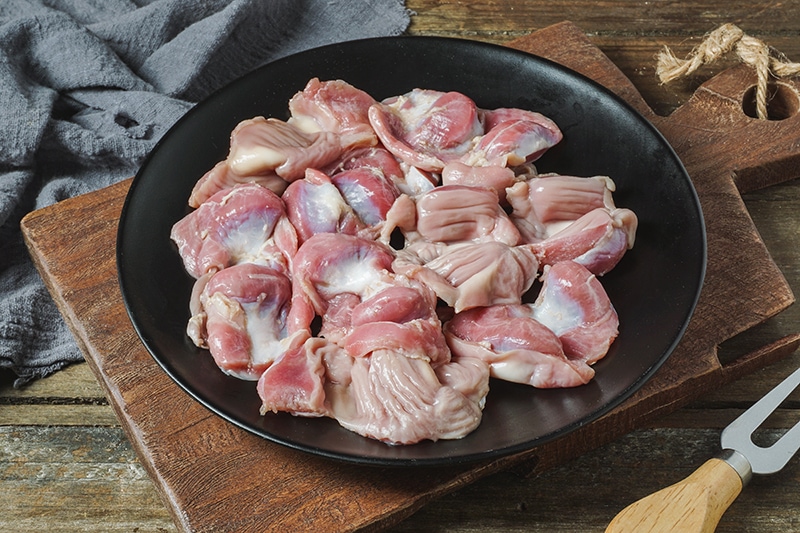
Variety and Balance in a Dog’s Diet
Importance of a Diverse Diet
Just like humans, dogs can benefit from a diverse and varied diet. Incorporating a wide range of protein sources, including chicken gizzards, can help ensure your dog receives a broad spectrum of essential nutrients. Remember to rotate protein sources regularly to provide variety and avoid potential food sensitivities or allergies.
Incorporating Other Protein Sources
While chicken gizzards offer numerous benefits, it’s essential not to rely solely on them for your dog’s protein intake. Incorporating other protein sources such as chicken hearts, chicken liver, turkey gizzards, beef tripe, or lamb kidney can provide a more comprehensive and balanced nutrient profile.
Balancing Macronutrients
In addition to protein, dogs require carbohydrates and healthy fats in their diet. Be sure to include a variety of carbohydrates, such as whole grains, fruits, and vegetables, to meet their energy needs. Healthy fats from sources like fish oil, coconut oil, or flaxseed oil can contribute to skin and coat health, as well as provide essential fatty acids.
Considering Individual Dog’s Needs
Every dog has unique nutritional requirements based on factors such as age, breed, size, activity level, and overall health. It’s important to take these factors into account when planning your dog’s diet. Consulting with a veterinarian or a canine nutritionist can help you determine the ideal nutrient ratios and portion sizes for your individual dog.
Consulting with a Veterinarian
No matter how well-researched or informed you may be, it is always recommended to consult with a veterinarian before making any significant changes to your dog’s diet. A veterinarian can evaluate your dog’s health history, perform necessary tests, and provide professional guidance tailored to your specific dog’s needs. They can advise you on the appropriate amount of chicken gizzards to include in your dog’s diet and ensure that it aligns with their overall dietary requirements.
Alternative Protein Sources for Dogs
In addition to chicken gizzards, there are several other protein sources that you can consider incorporating into your dog’s diet for variety and balanced nutrition:
Chicken Hearts
Chicken hearts are a lean protein source rich in essential amino acids, vitamins, and minerals. They are a great alternative to chicken gizzards and provide similar nutritional benefits.
Chicken Liver
Chicken liver is another organ meat that can be included in your dog’s diet. It is nutrient-dense, offering a good amount of protein, vitamins, and minerals. However, it should be fed in moderation due to its high vitamin A content.
Turkey Gizzards
For dogs who may have sensitivities to chicken or those who enjoy variety, turkey gizzards are an excellent alternative. They offer similar nutritional benefits to chicken gizzards and can be introduced gradually into your dog’s diet.
Beef Tripe
Beef tripe is the stomach lining of a cow and is highly nutritious for dogs. It is rich in protein, digestive enzymes, and healthy bacteria that can aid in digestion. Beef tripe provides a different taste and texture for dogs who may be picky eaters or have specific dietary requirements.
Lamb Kidney
Lamb kidneys are a nutrient-dense protein source for dogs. They offer a range of vitamins and minerals, including iron, zinc, and selenium. Like other organ meats, they should be fed in moderation to avoid excess vitamin A intake.
Incorporating these alternative protein sources into your dog’s diet can offer variety and ensure a well-rounded nutritional profile. However, it’s important to remember that each dog is unique, and their dietary needs may vary. Consulting with a veterinarian or a canine nutritionist will help you determine the ideal protein sources and portion sizes for your individual dog.
In conclusion, feeding chicken gizzards to dogs can be a safe and nutritious addition to their diet when done in moderation and with consideration of their individual needs. The high protein content, essential nutrients, and potential benefits make chicken gizzards an attractive option for dog owners. However, it’s crucial to be aware of the potential risks and drawbacks and to consult with a veterinarian to ensure the appropriate balance and variety in your dog’s diet. By providing a diverse range of protein sources and maintaining a well-rounded and balanced approach to their nutrition, you can help ensure your dog’s optimal health and well-being.

